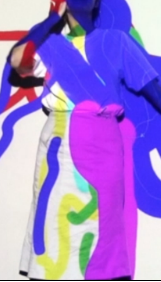When I see emoji I often think of hieroglyphs and wonder if and how there’s a connection. Why I make this connection is obviously not hard to imagine, since in both cases images are being used to communicate. But is this fact relevant, or is it a negligible similarity? In order to try to answer this question I will look at the most commonly known example of hieroglyphics: Egyptian hieroglyphs.
Egyptian hieroglyphs were the formal writing system used in Ancient Egypt. It combined logographic[1], syllabic[2] and alphabetic elements, with a total of around 1,000 distinct characters. Hieroglyphic characters can also have multiple meanings depending on how they are used. For example, the symbol for ‘house’, which was pronounced as pr, can also be used phonetically to represent the sound ‘pr’ in other words. Combinations of hieroglyphic characters could therefore be used to spell out larger words and composite phrases. Only a small percentage of Ancient Egyptians knew how to use hieroglyphs, such as priests, royals and civil officials.
Emoji however are ideograms[3] (or pictograms) and smileys[4] and can be used by anyone with a device that supports emoji. They are often used to signal a certain emotion or to shorten basic sentences by replacing text with image. Decorating and simple joy are in my opinion big reasons for its use as well. Once when I was at the airport to catch a flight, my mother send me a message saying: “Have a good flight! :airplane: ”. Here the airplane emoji really doesn’t add anything in terms of information, but it simply looks ‘nice’.
An important thing that distinguishes hieroglyphs from emoji, is that most emoji don’t have a clear meaning. A simple smiling smiley, for example, can be interpreted in a lot of differentways. This because of the context it is being used in, but also by everyone their personal association with that smiley. Some people believe it to be friendly, others get the idea the sender is being very sarcastic. It can even get so specific that the meaning of a certain emoji is only known by two individuals. Me and my best friend often use a specific emoji and we always know exactly what we mean by using it because we share a certain experience. This experience we share, created its meaning. If someone else sends me that same emoji I will never read the same meaning because it’s an entirely different context.
In essence, the use of emoji cannot be considered a language at all for there is no universal system that teaches us how to use them. One could attempt to write a very complex message with emoji, but it would simply turn into a riddle with a high probability of being misunderstood. This fact shows an interesting paradox, for the use of emoji can be considered very practical in certain situations, but its use quickly turns impractical when the amount of emoji used to communicate something increases.
With hieroglyphs, this is not the case. It allowed ancient Egyptians to compose a huge variety of texts from medical documents to poetry; texts that are significantly more advanced than what is possible to convey with emoji.
So, in the end the similarity mentioned in the introduction seems negligible, even barely existing. One could argue that emoji still holds potential for becoming a language, but it is nowhere near it now. And why should it? Looking at it from this perspective might be the wrong thing to do in the first place. Emoji much more seem to be about joy and intuition. It’s a way of communicating in a free and playful way, not designed to be eloquent at all.
[1] In written language, a logogram or logograph is a written character that represents a word or phrase.
[2] A syllabary is a set of written symbols that represent the syllables or (more frequently) moras which make up words.
[3] An ideogram is a graphic symbol that represents an idea or concept, independent of any particular language, and specific words or phrases.
[4] A smiley is a stylized representation of a (originally) smiling humanoid face that is a part of popular culture worldwide.





